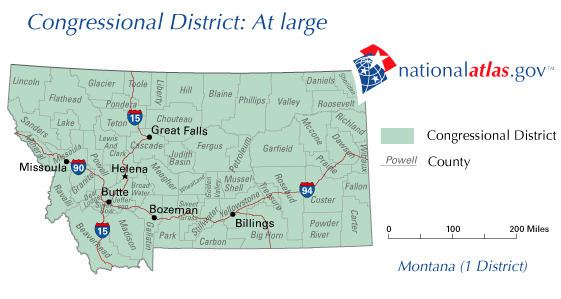Current Representative Vacant Median income 33,024 | Population (2014) 1,023,579 Cook PVI R+17 | |
 | ||
Distribution 54.0% urban46.0% rural Ethnicity 90.6% White0.3% Black0.5% Asian2.0% Hispanic6.2% Native American0.6% other | ||
Montana is represented in the US House of Representatives by one at-large congressional district. The district is the largest congressional district by population with just over 1 million constituents. It is also the second largest by size, after Alaska's at-large congressional district.
Contents
Politics
President George W. Bush won Montana in the 2004 Presidential election with 59.1% of the vote, beating John Kerry by 20 percentage points, which indicates that the district leans Republican. However, four years later John McCain won the state by only 2.5% over Barack Obama, and there is a significant Democratic presence in the state: as of 2013 the Governor's office and both U.S. Senate seats are controlled by the Democrats, which suggested at the time that the district could be competitive in future elections. In 2016, Donald Trump won by over 20%, while Ryan Zinke won Montana's single congressional seat by over 16%.
Early at-large district
From statehood in 1889, until the creation of geographic districts in 1919, Montana was represented in the United States House of Representatives by members elected at-large. From 1913 to 1919, in fact, there were two seats, still elected at-large. In the reapportionment following the 1990 census Montana lost one of its two seats, and its remaining member was again elected at-large.
Recent voting history
Election results from presidential races are shown below.
1889–1919: One, then two seats
The two at-large seats were moved to district representation in 1919, and remained until 1993, when Montana lost a seat due to redistricting from the 1990 US Census, re-establishing the single seat at-large district.
Recent election results
The following are official results from the general elections.
